Lesula Profile
Deep in the jungle of the Lomani basin in Congo, there are mysterious and unusual animals for which only the local tribespeople have a name.
Until very recently, this included the Lesula, a monkey with eerily human-looking eyes, with a beautiful echoing call that resonates through the forest.
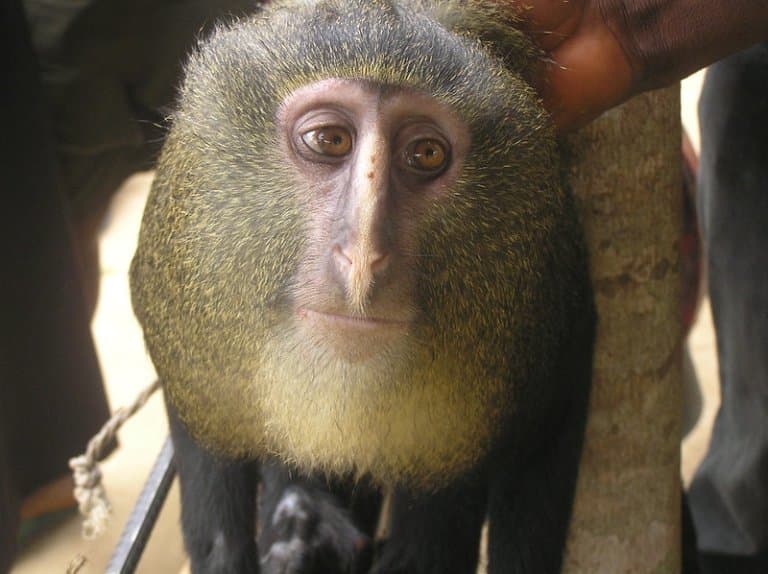
Lesula Facts Overview
| Habitat: | Lowland Rainforest |
| Location: | Lomani Basin, Central Congo |
| Lifespan: | Unknown |
| Size: | >65cm |
| Weight: | >7kg |
| Color: | Brown, amber, gold |
| Diet: | Vegetation |
| Predators: | Human hunters, leopards, crowned eagles |
| Top Speed: | 15kph (10 mph) |
| No. of Species: |
1 |
| Conservation Status: |
Vulnerable |
The Lesula monkey, Cercopithecus lomamiensis, was only described by the scientific community in 2012. It was spotted by researchers for the first time in 2007 as a captive pet in a village in Congo and was finally described officially around five years later. 1
The Lesula is only found west of the Lomami River according to the researchers who discovered the monkey, while its sister species the owl-faced monkey is only found east of the Lualaba (Congo) River
Lesula monkeys have a human-like facial appearance and spend much of their days in a sort of peaceful unconcern on the forest floor.
Not a lot about their social activities is known yet, but they’re thought to be at risk of decline from local hunting and deforestation.
Still, the region they occupy is relatively uninhabited and they stand a good chance of being effectively protected with a little investment from conservationists and Congolese institutions.
Interesting Lesula Facts
1. They have an astonishing human-looking face
In particular the position of their eyes are eerily human. While rounder than human eyes, they appear to show vulnerability and emotion.
Lesula have been described as looking like many celebrities, such as Jake Gyllenhaal and David Schwimmer, as well as the face of famous paintings like the Mona Lisa, or Titus by Rembrandt.
The Guardian described their appearance in typical style. 2
The photograph captures a sensitivity and intelligence that makes this monkey look like it is sitting for its portrait by Rembrandt. It reveals a staggeringly insightful, wise, and melancholy face. Like Rembrandt’s son Titus in the portrait of him by his father that hangs in London’s Wallace Collection, the lesula looks right back at its beholder, calm and pensive, examining you as you examine it. Its eyes have the depth and frankness of those seen in moving portraits on Roman-era mummies from the Fayoum, or in Antonello da Messina’s haunting portrait of a man gazing back out of a glassy oil panel.
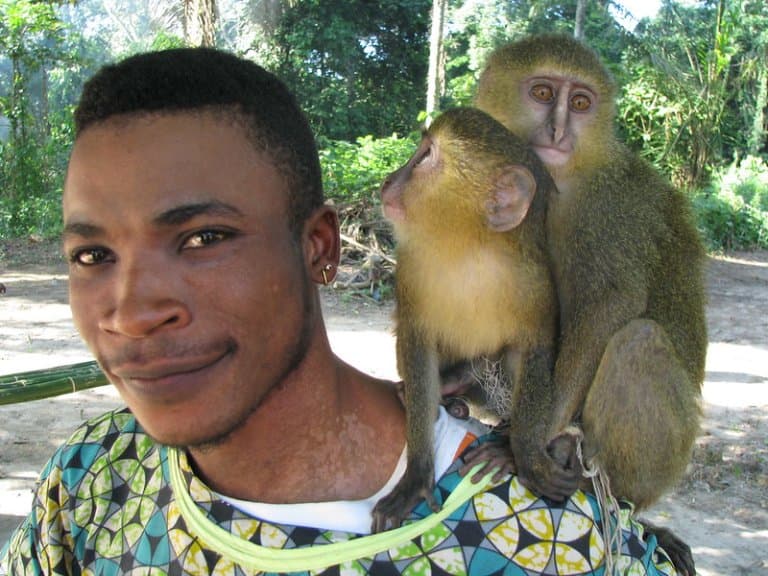
2. They have a spectacular bottom
The male Lesula monkey has relatively neutral, foresty colours all over its body. Browns and greys and patterned bands of amber fur, much like many forest mammals. One part of it sticks out in contrast with the surroundings, however: its butt. Specifically, its testicles.
The lesula, like the vervet monkey, has vivid blue balls. Unlike the vervet, this bright blue extends across its buttocks, similarly to a mandrill.
This is pretty interesting in itself, but it is also worth mentioning that this colouration seems to fade soon after death, which suggests that the colour functions as some kind of sign of fitness and health.
3. They can BOOM!
Lesula calls are distinct and resonating, low-frequency ‘booms’ which travel long distances through the rainforest. These are thought to emerge from a specialised air sac inside the larynx of the male.
They mostly call between the hours of 6:00 and 6:30 am, as part of a dawn routine, a lot like many monkey species. It’s thought that these calls are either contagious or communication devices, as they’re often replied to by another monkey of the same species. 3
4. They’re relaxed around their neighbours
When scientists set up cameras to follow the behaviours of the lesula monkeys, they found something very sweet. When hanging out with their most common neighbours, tiny antelopes called blue duikers, the Lesula monkeys most commonly exhibited “relaxed behaviours”.
Aside from being cute, this suggests that the lesula has gained a vigilance benefit from sharing its space with the duiker, as they’re skittish little prey animals with large eyes and should be quick to alert the monkeys of any presence of a predator.
Lesula were also found to have been kept as pets and were relaxed around local tribesmen.
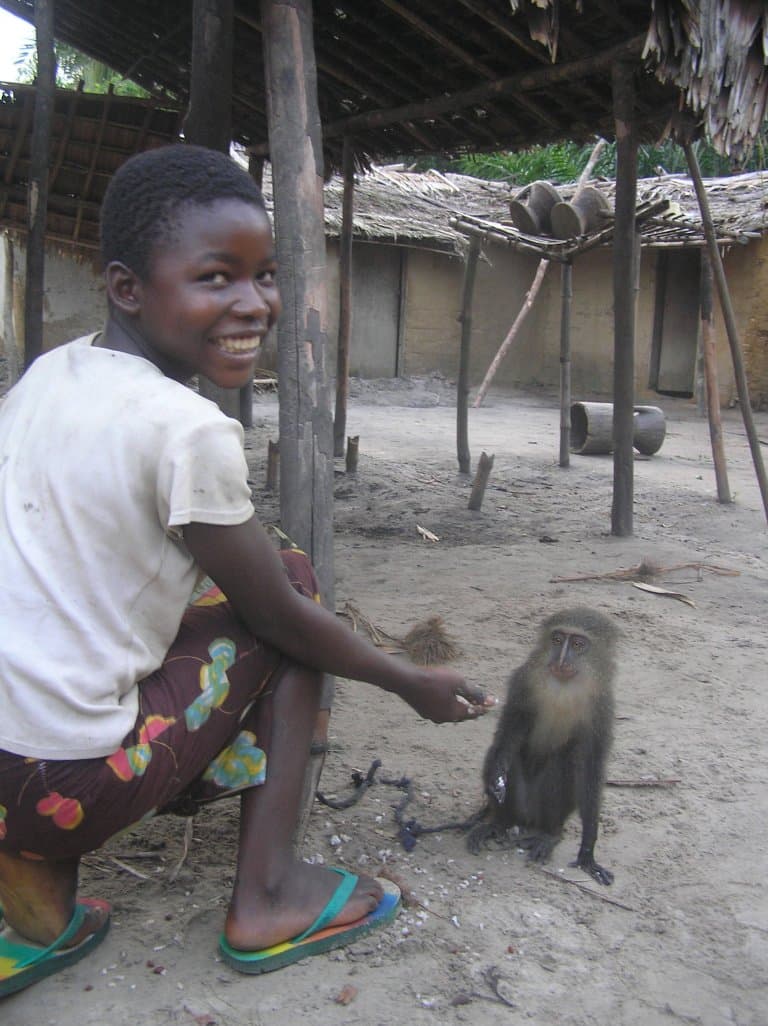
5. They’re relaxed in general
The Lesula monkey has been described by researchers as being shy and quiet, choosing to spend most of its time rummaging around foraging or just relaxing with its friends. It’s a nice way to live, but it does make it all the more sad that they’re hunted for bushmeat.
6. They spend a lot of time on the ground
This is somewhat unusual for a monkey. There are a few examples in central Africa, like L’hoest’s monkey, that spend a significant portion of their time below the trees, but typically monkeys prefer to be off the ground, with good vantage points and away from predators.
These lesula may have moved to the forest floor to avoid competing with other tree-dwelling (arboreal) monkeys, and found that they quite like it down there.
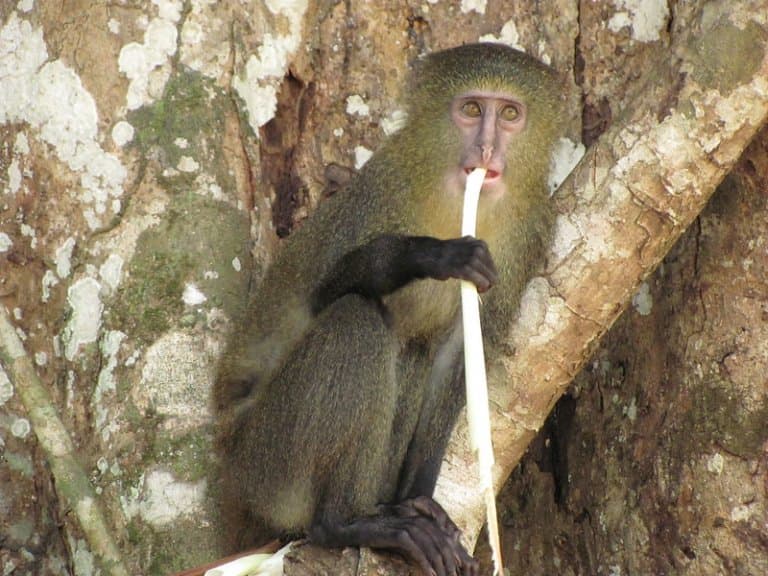
7. They’re at risk of population decline from hunting
It’s thought that the lesula monkeys rely on primary forests. This is a vulnerable position to be in for a monkey who is hunted by locals, as their habitat is restricted, and they can decline rapidly. It’s been proposed that the region in which they have been described should be protected and that active and continued monitoring and protection are needed to conserve the species.
There still isn’t a lot of population data on these elusive animals so it’s hard to know exactly how much risk they are facing. Still, it can be inferred from what is already known about population dynamics and the ecology of the area that the local hunting will play a damaging role in their populations. As such, a provisional IUCN ranking of ‘Vulnerable’ has been provided, pending more research.
8. Lesula is a local name
The common name for these monkeys comes from the name the locals give them.
It’s not certain what it means, but the monkey itself has been historically familiar to hunters in the area for as long as anyone can remember.
However, it’s in such a remote area, modern science has only just found out about it!
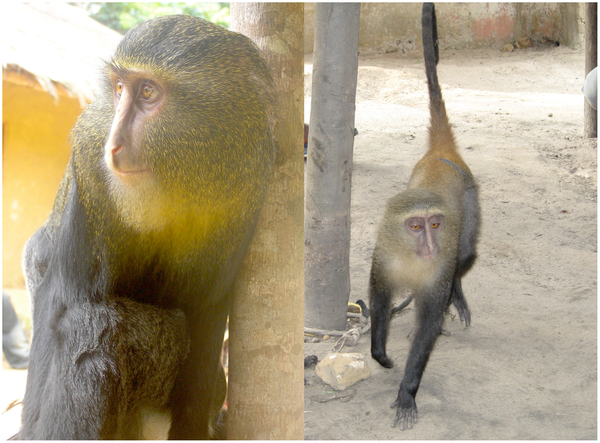
9. They can live in groups of up to 38 individuals.
The original study that described Lesula from 2021 suggested that they comprise small social groups. While this is true in many cases, follow-up behavioural studies have spotted groups of up to 38 individuals, making them quite varied in their social behaviours.
A study from 2016 found the mean groups size to be just over 6 monkeys, but this has been called into question due to the use of camera traps to monitor the groups; their limited field of view may be missing individuals sitting in the canopy.
These monkeys are very shy and not habituated to human presence, so they remain challenging to monitor. 4
10. They’re probably polygynous
Most recorded groups comprised primarily of females. Conversely, lots of lone males were spotted too – this suggests that their matin system involves roaming males and more fixed groups of adult females with their juveniles.
There are several exceptions to this too, such as small bands of bachelors and troops with more than one male in them, and as yet, we don’t have enough to go on to be sure.
11. Lesula exhibit ‘terrestrial quadrupedalism’.
This basically means they walk on the ground, on all-fours.
Plenty of animals do this: cows, cats, and people looking for change under the sofa; but it’s not so common in monkeys.
Lesula Fact-File Summary
Scientific Classification
| Kingdom: | Animalia |
| Phylum: | Chordata |
| Class: | Mammalia |
| Order: | Primates |
| Family: | Cercopithecidae |
| Genus: | Cercopithecus |
| Species Name: |
Cercopithecus Lomamiensis |
Fact Sources & References
- Dr Terese Hart, “A New Species of Monkey from the Center of Congo“, Bonobo In Congo, 2012.
- Jonathan Jones, “If the lesula is a newly discovered monkey, why is it so oddly familiar?“, The Guardian, 2012.
- John Hart Et al., “Lesula: A New Species of Cercopithecus Monkey Endemic to the Democratic Republic of Congo and Implications for Conservation of Congo’s Central Basin“, Plos One, 2012.
- Charlene S. Fournier Korchia, “BEHAVIORAL ECOLOGY OF CERCOPITHECUS LOMAMIENSIS IN THE LOMAMI NATIONAL PARK AND BUFFER ZONE, DEMOCRATIC REPUBLIC OF THE CONGO“, Florida Atlantic University Library, 2020.
